This invasive species is very hardy and survives under challenging conditions. Removing it is a big task and eradicating it from a landscape can take years.
Written by Manish Machaiah
As the vehicle moved through the wildlife sanctuary, all that greeted the eye was long stretches of the Senna spectabilis, native species of America, introduced to India as ornamental plant. The plant has truly invaded the landscape here, far away from its homeland. No other vegetation could be seen anywhere around as the Senna had taken over the area completely. We did not see any wildlife in this part, the Muthanga range of the Wayanad Wildlife Sanctuary (WWS) in Kerala.
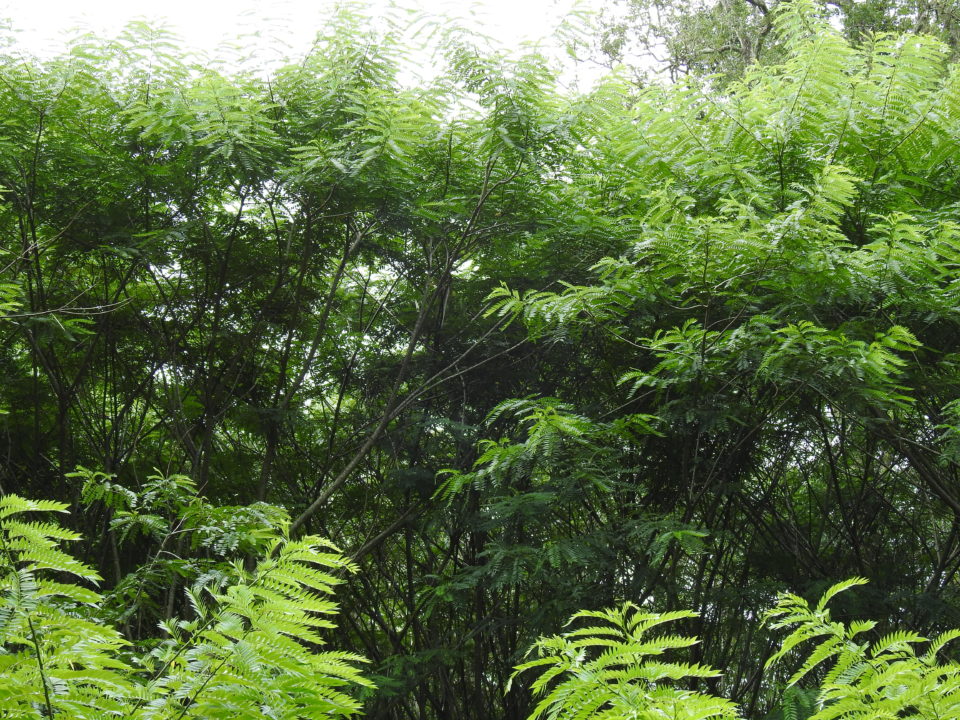
Senna spectabilis
The sanctuary spans over an area of 334.44 sq km², and holds the highest number of tiger population in the state along with other variety of flora and fauna. According to the Kerala Forest Research Institute (KFRI) there are nearly 22 invasive species in Wayanad Wildlife Sanctuary. Senna is one of them which could pose a major threat if proper action is not taken soon.

Muthanga range of Wayanad Wildlife Sanctuary invaded by Senna
Senna spectabilis belongs to Fabaceae family, and is grown as ornamental plant across tropical America. It can grow 7 - 18 metres tail; is evergreen in climates with rain all year round, but can become deciduous in some regions, and produces yellow flowers. Spectabilis has been commonly used in traditional medicine for many years. Information in the biomedical literature has indicated the presence of a variety of medicinally-important chemical constituent. Pharmacological studies by various groups of investigators have shown that it possesses significant biological activity, such as antibacterial, antibiofilm, antifungal and antioxidant properties.
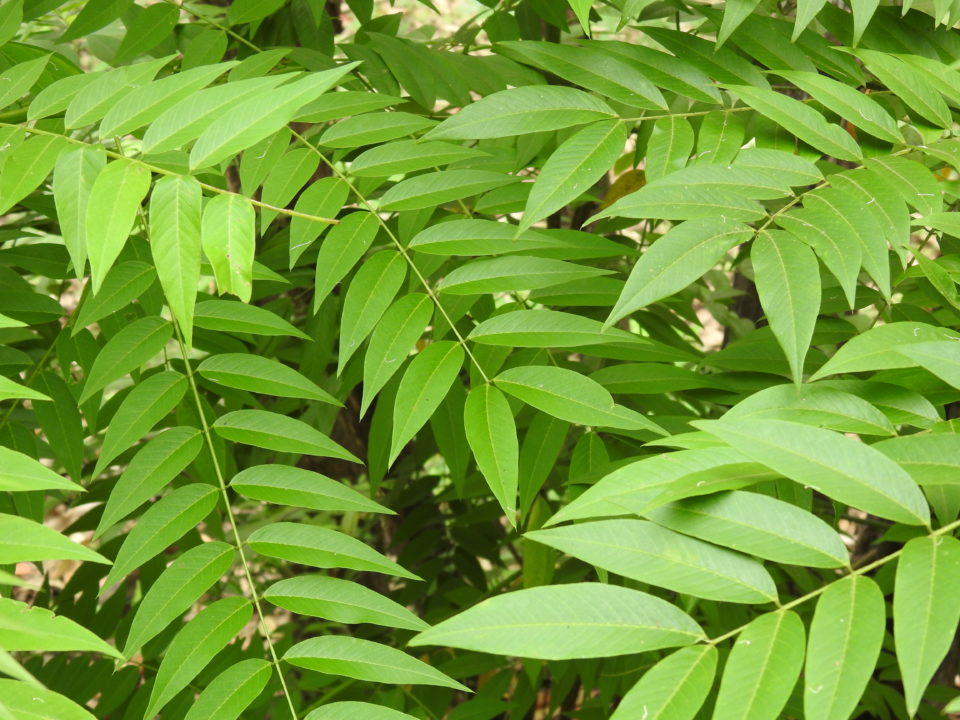
However, it is considered an environmental weed by the Global Compendium of Weeds. It grows extremely fast, flowers and sets seed profusely, and re-sprouts immediately when cut. In places like Australia, Uganda, and Cuba this species is considered as invasive. Now it has made its way to Indian forests, especially South India.
It takes around 2-3 years for the plant to grow from a sapling to a tree. In about two years, the trees start to flower. One young tree can produce around 6000 seeds every season. Survival rate of these seeds are 95-99% and they can survive for 8-9 years in soil. Also it has been noticed that if you debark a Senna tree it suddenly starts flowering just for survival!
An activist group – Wayanad Prakruthi Samrakshana Samithi led by the Conservationist N Badusha first took this issue of the invasive species Senna up to the Kerala Forest Department. During the same period, Kerala Forest Research Institute (KFRI) did an extensive study on this issue. KFRI studies have established that in and around Muthanga and Tholpetty eco centers, around 10% area of open spaces, which is about 2% of total area of the Wayanad Wildlife Sanctuary, is infected by Senna spectabilis. KFRI has developed very effective way of removal method of Senna spectabilis.
Since then, WCS-India pitched in to address the issue and looked at ways to do the same. Based on the donor support, WCS-India decided to provide employment opportunities to the flood-affected families during 2018 by involving them in Senna removal program.
The WCS-India team started working in the Muthanga range of Wayanad Wildlife Sanctuary in March 2019 on a test plot of 3 acres of land with Senna. Here different methods suggested by KFRI for Senna removal were tried and the team waited for a month to see the result. These included girdling of trees and uprooting of the young plants. There were doubts if uprooting is an effective method as it would be very difficult to uproot mother/big plants. However, this was started in June when the rains arrived. Monsoon is the best season to pull them out, as the soil is moist and loose. As observed after a heavy rainfall, the team was able to pull out the mother/big plants. When the rain stops this method cannot be continued. Currently, this is advocated as the best and non-harmful method to follow.
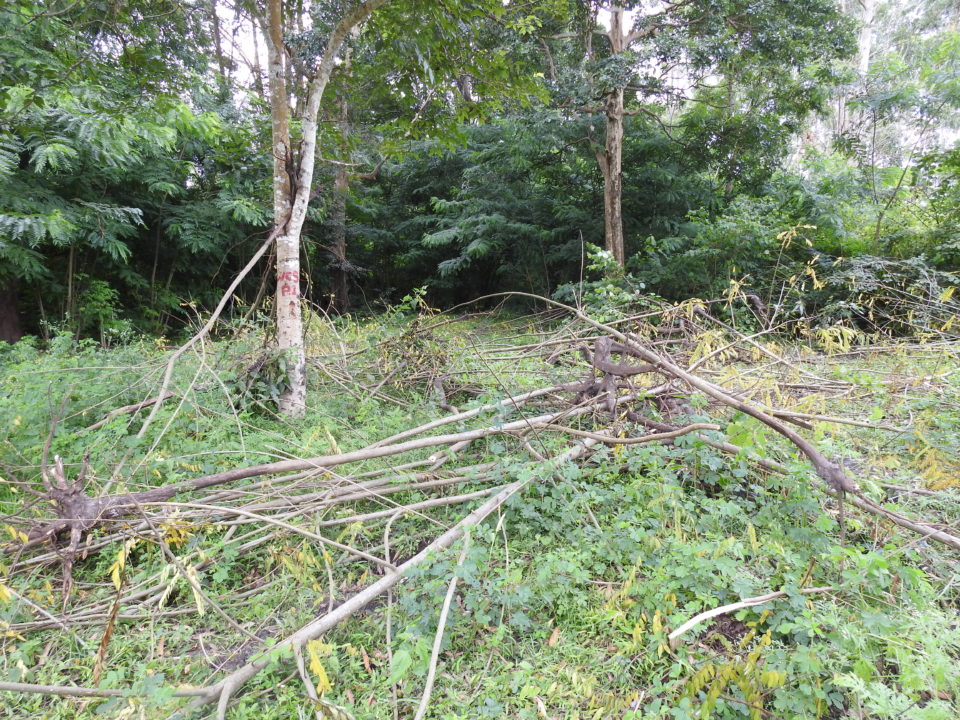
WCS-India test plot
When our vehicle came to the Senna removal spot, what we see was a group of people working together to uproot trees. There were around 35-45 men belonging to the local tribal community who have been employed to remove these plants. They work under the supervision of the forest department and WCS staff. Besides removing the invasive species, the project has thus generated employment for the locals.
Around 8-10 people work together to remove one plant, taking on an average about 20-30 seconds. Smaller plants required 2-5 people and take around 10 seconds. The men have so far uprooted around 30-35 lakh saplings. However, given the extent of Senna spread, it will take years to remove all the plants by uprooting. In the meanwhile, the seeds would see new plants sprout!
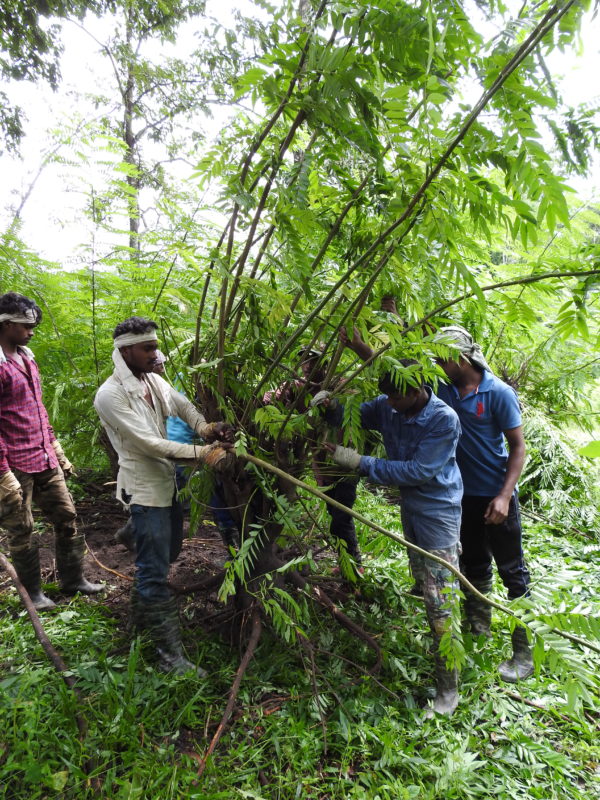
Removal of big plants after a rainfall
After monsoon the team plans to go for other methods like debarking (removing bark from wood) and girdling (removal of a strip of bark from around the entire circumference of either a branch or trunk of a plant).
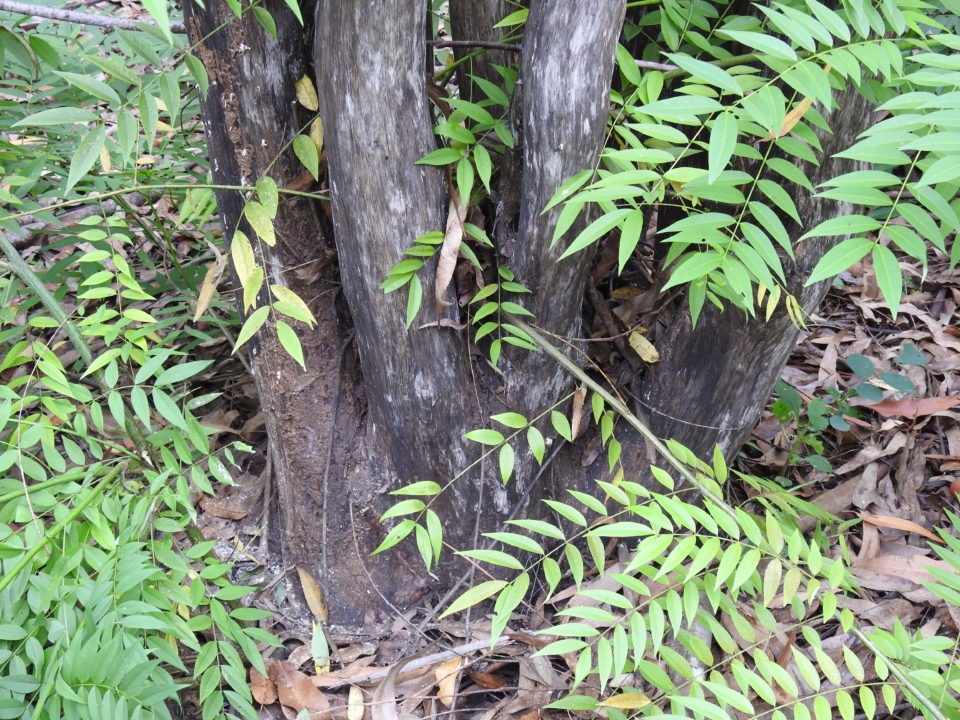
Debarked tree
According to the KFRI survey, 2% of the sanctuary has been affected which is more than 700 hectares. Herbivores do not consume the leaves of Senna, no grass grows below and there is no presence of insects too. There hasn’t been much study done to prove if the leaves are toxic to animals.
“The wildlife completely avoid areas where there is Senna growth. We can hardly see any living creature in the Senna grown areas, not even insects. There is no undergrowth, grass or any other plants growing under the Senna plants,” says WCS-India Field Coordinator Arul Badusha. The tribals who are working tirelessly on this project noted that the leaf sap can cause minor irritation when it comes in contact with skin.
It was in the 1970s that the Social Forestry wing of the Kerala Forest Department got Senna seeds from abroad and distributed saplings to people across Wayanad as a social forestry initiative since the plant had very beautiful flowers. There was no proper study done back then before introducing this in Wayanad. They planted 3-5 saplings around the Muthanga Range Office, from where it started to spread into the forest.

From where it all started, Senna near the Muthanga Range Office
Before this the Muthanga range had a very fertile forest but clear-felling of forest destroyed it. The trees were completely cut down, leaving behind the debris, which was then burnt and the land was auctioned to cultivate tapioca. Along with tapioca eucalyptus was introduced as well. Then when the eucalyptus was removed the Senna took over the land. As it was completely barren and open land the Senna grew faster. Now Senna is spreading from Muthanga range to the rest of Wayanad Wildlife Sanctuary. Also, the Senna infestation is spreading to nearby reserves like Bandipur, Nagarahole, and Mudumalai.

Flowered tree
As N Badusha, the founder of Prakruthi Vana Samrakshana Samithi says, awareness about Senna in local and national level is much needed now so that the government can take immediate action and stop Senna from spreading across other parts of the forest.
An initiative that the KFD/WCS-India team has started is to plant bamboo saplings in between the Senna with the hope that bamboo will overcome the Senna Hopefully, someday in the future the forest can regenerate and return to its old glory.